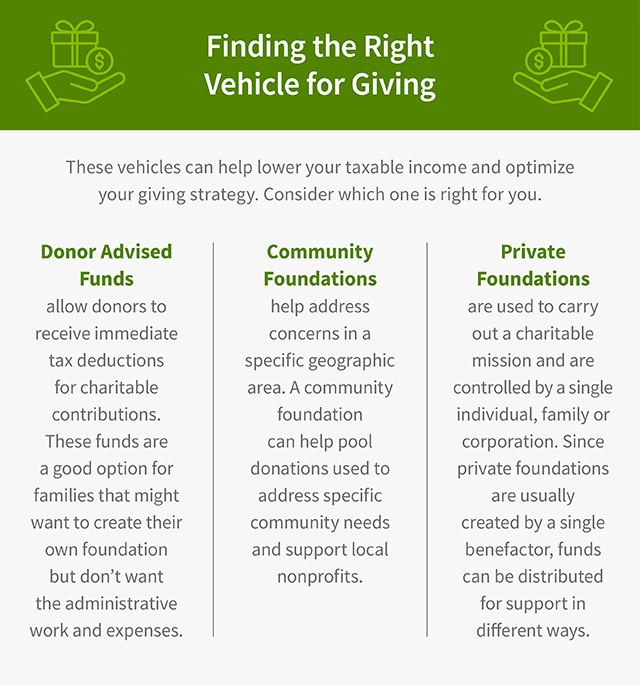Establishing a Family-Wide Philanthropic Plan
Finding common ground on causes that are close to the heart isn’t always easy. Here’s how to come together and instill the responsibility in rising generations.
Bringing your children or grandchildren into conversations about your family’s philanthropy is a key step in their financial education. But be prepared, because younger generations might have wildly different views about giving—and that’s okay. “Philanthropy, as a whole, can often have the effect of binding a family together,” explains Jeffrey H. Winick, Senior Wealth Strategist at Regions Bank.
An inclusive, values-driven approach to giving has room for different perspectives. Not only that, but talking through different generational outlooks can lay the foundation for a philanthropic plan that helps everyone achieve their goals. Wealth creators who are looking to secure their legacy can explain that vision to their heirs. Younger generations looking to establish a voice in family conversations can feel heard.
Here are some best practices to follow as you develop your family’s philanthropic plan.
-
Honor Different Perspectives in Family Meetings
When it comes to values and goals, it can sometimes seem like there’s a stark divide between wealth creators or stewards and younger generations. “In terms of what they would like to accomplish with their giving, younger generations tend to be more concerned about social issues with a broader geographic perspective, whereas older generations might be more traditionally focused in their purposes for giving,” says Winick.
But most families can easily find common ground: They believe in the importance of giving. “Establishing a family-wide philanthropic plan is not necessarily about agreement, it’s about alignment,” says Stephen M. Russell, a Private Wealth Management Leader at Regions Bank in Nashville. “It’s about developing the next generation of philanthropic leaders rather than dictating, ‘This is the cause that we’re going to support with this foundation.’”
Families can achieve this alignment in their philanthropic planning by holding regular family meetings or retreats. “Not only are family meetings a place to share different perspectives and report back about progress and successes,” says Winick, “but they can provide insight into how different stakeholders approach decision-making and consensus-building.”
“When the younger generation observes family members collaborating and even compromising on where money should go, then they’re more prepared to do the same when it’s their turn to weigh in,” says Russell.
Family meetings aren’t just for discussing business. “They’re also for expanding horizons and gaining insight about causes,” says Winick. “Maybe you bring in outside speakers, advisors or people who will educate the family on different topics. Sometimes perceptions can change.”

-
Define and Exemplify Core Values
Prioritizing charitable giving becomes even easier when families are clear on their core values. Maybe you value contributing to environmental causes, elevating the community through education or supporting a spiritual or religious group. Articulating these values can help generations connect on where they align, rather than focusing on where they diverge. Hard work and persistence will also factor into your giving strategy.
There may also be differences in perspective, which is fine. For instance, let’s say a wealth creator has long supported a local church that houses a nonprofit for people trying to get back on their feet, benefiting their town or city. Maybe members of the younger generation want to support a mission in Africa that is building an underground water system. “Combining international or global causes with local or regional support can lead a family to having a fuller philanthropic experience. If there is a crossover of inclusivity, then a broader family mission can benefit from bringing together the perspectives and experiences of multiple generations,” says Winick.
Though their gifts may manifest differently, younger and older generations can align on the underlying core values that make a family-wide philanthropic plan work.
-
Provide Opportunities for Leadership and Meaningful Work
The younger generation can better understand the philanthropic landscape simply by being part of it. “Getting involved in fundraising events can be empowering. That might mean being out there as a family spokesperson, going to meet people of their generation or gaining leadership skills,” says Russell.
Depending on your family’s charitable vehicles, there are different ways to contribute. For specific causes, young adults could have projects that they oversee, such as fundraising events, while learning as much as they can about the gift recipient. Whether it’s a site visit where young adults can see the impact of giving firsthand, or smaller projects they oversee themselves, offering the next generation an active role within an organization can foster their engagement in philanthropy.
If you have a family foundation, there are several ways to develop leadership within the organization, says Russell. Perhaps members of the younger generation could run a junior board that is tasked with researching a particular cause, building an argument and reporting back to the formal board about why to donate.
As wealth creators consider their legacy, “it can also be helpful to name successor advisors that surpass the first generation,” says Russell. Even if the next generation won’t take the reins until much later, being a successor can impart a sense of meaning and responsibility.
-
Clearly Define Success and the Impact of Giving
A crucial step in creating a long-term, family-wide philanthropic plan is teaching the younger generation “what success and the end goal looks like,” says Winick, adding that it’s important to define both tangible and intangible outcomes.
Let’s say you’re making a grant to an educational organization to construct a new building. Start by talking to the next generation about the time horizon for accomplishing the goal. While the immediate tangible impact might be completion of construction, what might be other tangible benefits? As the project evolves, you might discuss progress and note whether it’s on track. Once the building project is complete, maybe the new measure becomes the number of people who benefit from educational grants thanks to the new building and the alignment between intent and outcome. These are also examples of tangible outcomes.
Defining the intangible outcomes of a project can be trickier. “It’s important to help the younger generation understand that the return on a charitable investment is not the same as a business investment—and actually that is the point,” says Russell. For example, the betterment of the community at large and participants actualizing their potential are intangible outcomes of funding an educational facility.
With baby boomers poised to transfer more than $53 trillion in wealth, the value of a family philanthropic plan may take on urgency for many families in the near future. That’s why it’s so important for young adults to start cultivating a charitable mindset.
“The earlier you can start the better,” says Winick. “Young adults who are focused on making a difference can find different ways to improve their community—or make the world a better place.”
Talk to Your Regions Wealth Advisor About:
- What steps you should consider when setting up your first family meeting about philanthropy.
- How to align with a younger generation who views wealth differently.
Interested in talking with an advisor but don’t have one?
Find a contact in your area.





